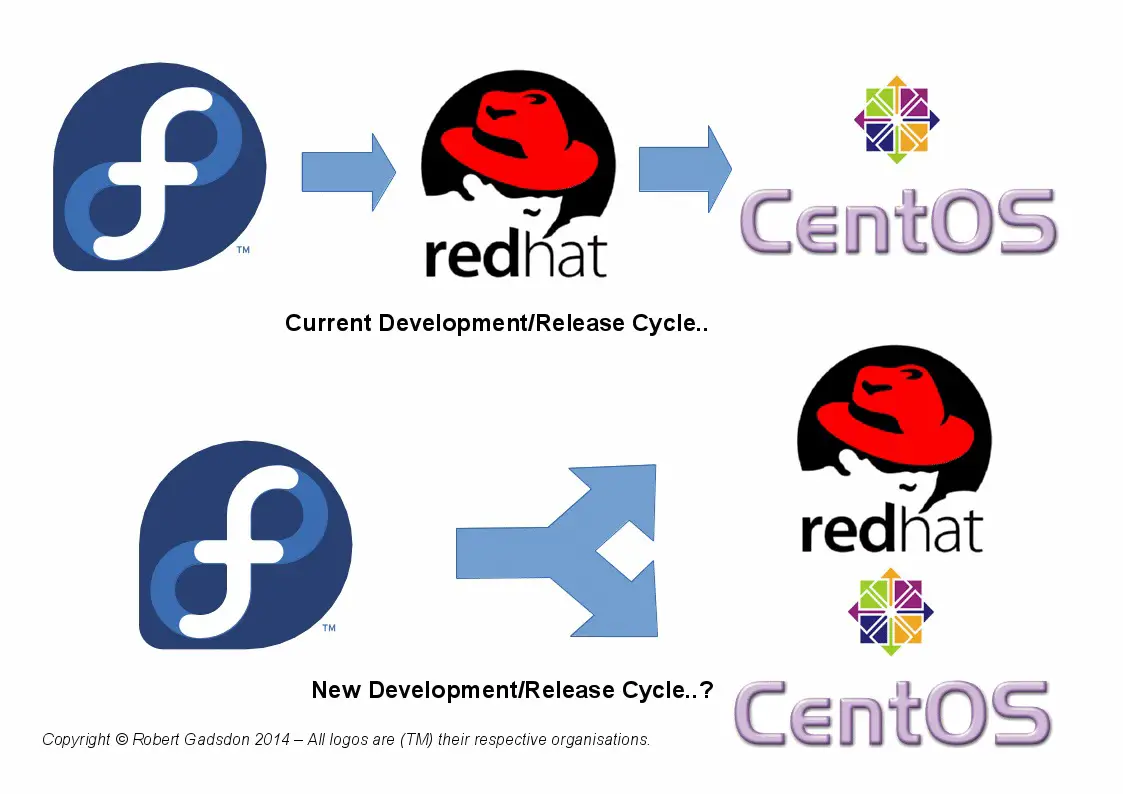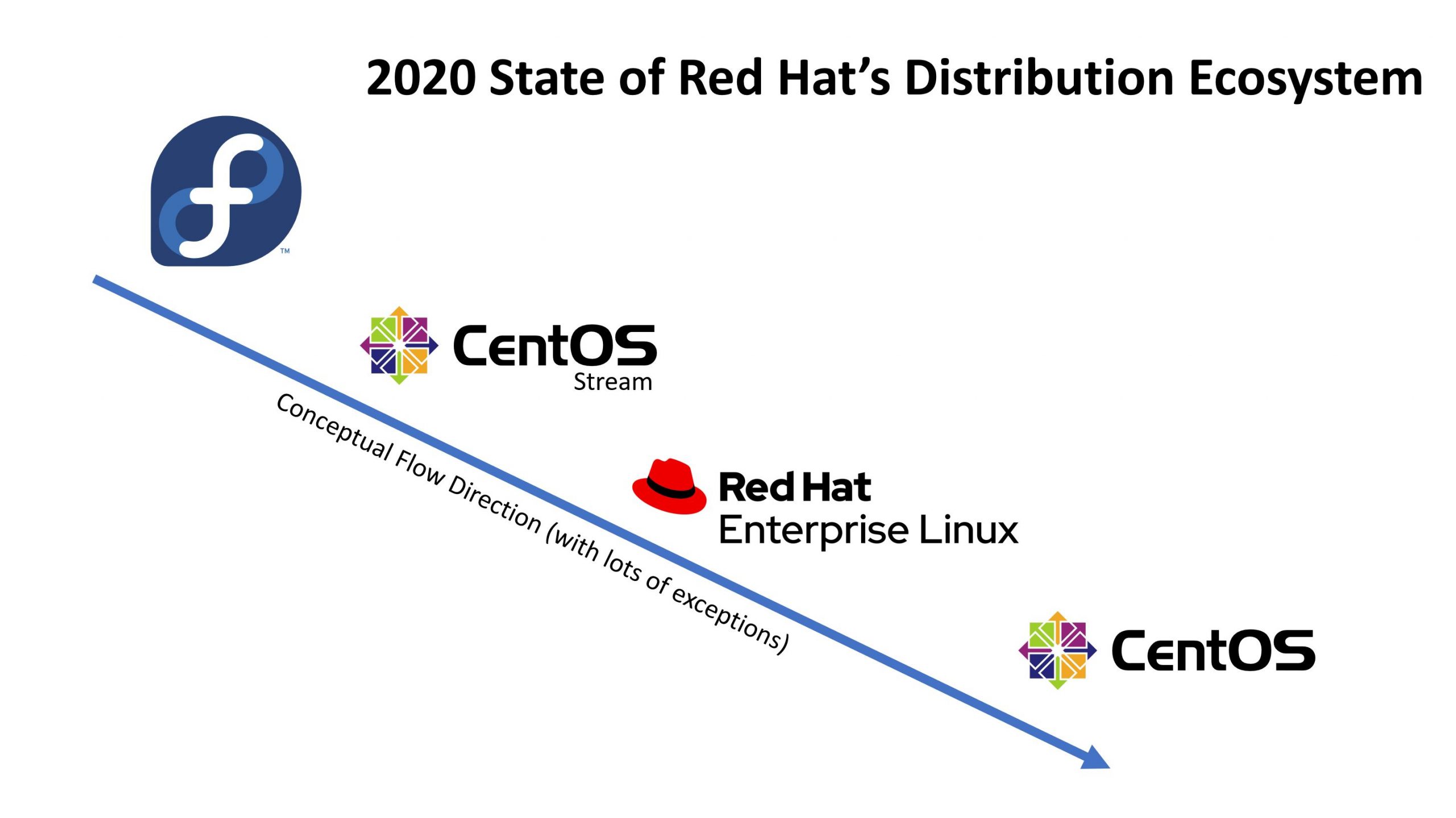Fedora Vs. Centos Stream: Choosing The Future Of Red Hat Systems

Red Hat Enterprise Linux (RHEL) is a widely used enterprise-grade Linux distribution known for its stability and security. Two popular distributions based on RHEL are Fedora and CentOS Stream. Both offer their unique advantages and target different audiences. This article will compare Fedora and CentOS Stream to help you make an informed decision about which one to choose for your specific needs.

Fedora: The Cutting-Edge Option

Fedora is a community-driven distribution that serves as a testing ground for new technologies and features that eventually make it into RHEL. It is released on a regular schedule with new versions every six months. Fedora is ideal for users who want access to the latest and greatest open-source software and are willing to tolerate some instability. It is also a great choice for developers and contributors who want to participate in the open-source community.
CentOS Stream: The Stable Sibling
CentOS Stream is a rolling release distribution that tracks the development of RHEL closely. It provides a stable and reliable platform for production environments. Users can expect fewer updates compared to Fedora, but those updates will be thoroughly tested and validated. CentOS Stream is a good choice for businesses and organizations that prioritize stability and compatibility with RHEL.
Key Differences
- Release Model: Fedora is a short-term release distribution, with new versions released every six months. CentOS Stream is a rolling release distribution, with continuous updates.
- Target Audience: Fedora targets early adopters, developers, and contributors who want access to the latest technologies. CentOS Stream targets production environments that require stability and compatibility with RHEL.
- Software Packages: Fedora offers a wide range of software packages, including the latest open-source software. CentOS Stream offers a more limited set of packages, but those packages are thoroughly tested and validated for stability.
Choosing The Right Distribution
The right choice between Fedora and CentOS Stream depends on your specific requirements. If you need access to the latest technologies and are willing to accept some instability, Fedora is a good choice. If you prioritize stability and compatibility with RHEL, CentOS Stream is a better option.
Conclusion
Fedora and CentOS Stream are both excellent choices for RHEL-based systems. Fedora offers cutting-edge technologies and a vibrant community, while CentOS Stream provides stability and compatibility. By understanding the key differences between the two distributions, you can make an informed decision based on your specific needs.## Fedora Vs. CentOS Stream: Choosing The Future Of Red Hat Systems
Executive Summary
Fedora and CentOS Stream are two popular Linux distributions that are based on Red Hat Enterprise Linux (RHEL). Both distributions offer a stable and secure platform for running applications, but they have different strengths and weaknesses. Fedora is a community-developed distribution that is known for its cutting-edge features and rapid release cycle. CentOS Stream is a Red Hat-supported distribution that is designed to be a binary-compatible replacement for RHEL. In this article, we will compare Fedora and CentOS Stream and help you decide which distribution is right for you.
Introduction
Red Hat Enterprise Linux (RHEL) is a popular Linux distribution that is used by many businesses and organizations. RHEL is a stable and secure distribution that is known for its reliability and performance. However, RHEL can be expensive, and it can be difficult to keep up with the latest security updates.
Fedora and CentOS Stream are two free and open-source alternatives to RHEL. Fedora is a community-developed distribution that is known for its cutting-edge features and rapid release cycle. CentOS Stream is a Red Hat-supported distribution that is designed to be a binary-compatible replacement for RHEL.
Fedora Vs. CentOS Stream: A Comparison Of The Top 5 Differences
1. Release Cycle
Fedora has a rapid release cycle, with new releases every six months. This means that Fedora users have access to the latest features and security updates. CentOS Stream has a slower release cycle, with new releases every year. This means that CentOS Stream users have access to a more stable platform, but they may not have access to the latest features and security updates.
2. Package Management
Fedora uses the DNF package manager, while CentOS Stream uses the YUM package manager. DNF is a newer package manager that is designed to be faster and more efficient than YUM. However, YUM is a more mature package manager that has a wider range of support.
3. Community Support
Fedora has a large and active community of users and developers. This means that Fedora users have access to a wealth of support and resources. CentOS Stream has a smaller community of users and developers, but it is backed by Red Hat. This means that CentOS Stream users can expect to receive high-quality support from Red Hat.
4. Hardware Support
Fedora supports a wide range of hardware, including both 32-bit and 64-bit architectures. CentOS Stream supports a more limited range of hardware, but it is certified to run on a wider range of servers.
5. Security
Fedora and CentOS Stream are both secure distributions. However, Fedora has a more aggressive security policy than CentOS Stream. This means that Fedora users are more likely to receive security updates quickly.
Conclusion
Fedora and CentOS Stream are both excellent Linux distributions. Fedora is a good choice for users who want a cutting-edge distribution with a rapid release cycle. CentOS Stream is a good choice for users who want a stable and secure distribution that is backed by Red Hat.
Keyword Phrase Tags
- Fedora
- CentOS Stream
- Red Hat Enterprise Linux
- Linux distributions
- Stable and secure

Centos Stream is bleeding edge, Fedora is not
Fedora is more up to date than Centos Stream
Centos Stream is the future of Red Hat
Fedora is a hobbyist’s dream
Centos Stream is the choice of professionals
Fedora is not as stable as Centos Stream
Centos Stream is the future of Red Hat, but Fedora is still a viable option
Fedora is more bleeding edge than Centos Stream
Centos Stream is the better choice for enterprises
Fedora is the better choice for developers
Centos Stream is the future of Red Hat, but Fedora is still a good option for some users
Fedora is more up to date than Centos Stream, but Centos Stream is more stable
Centos Stream is the future of Red Hat, but Fedora is still a viable option for some users
Fedora is not as stable as Centos Stream, but it is more up to date